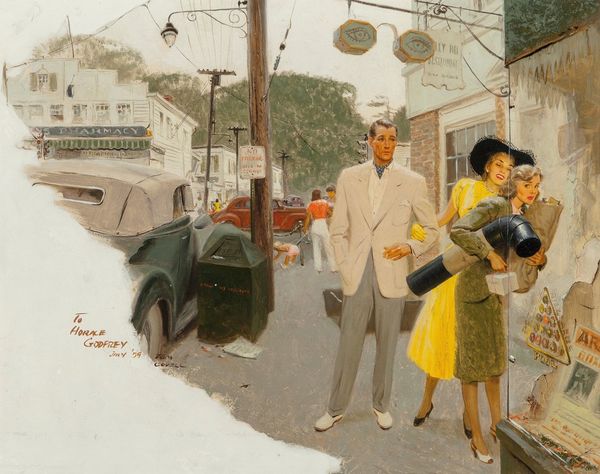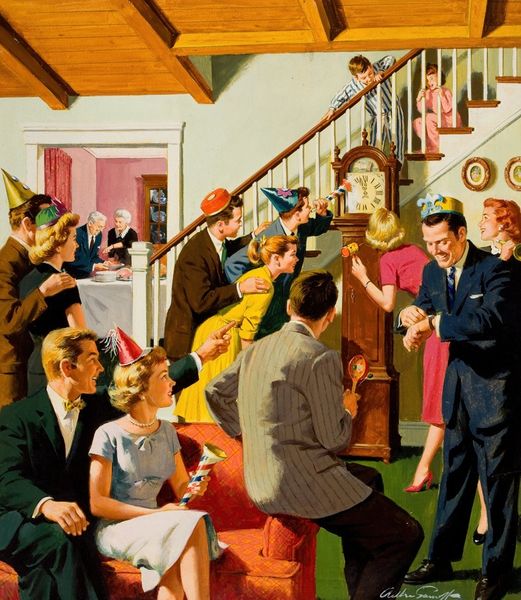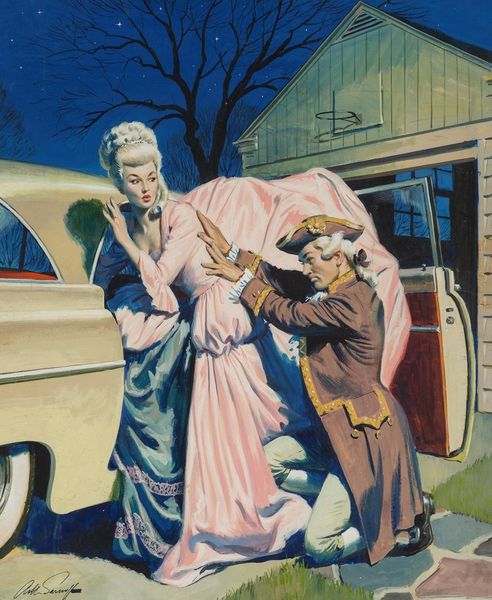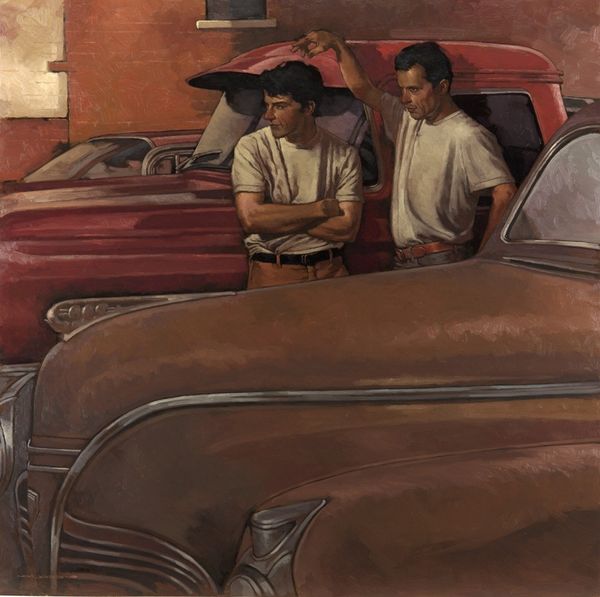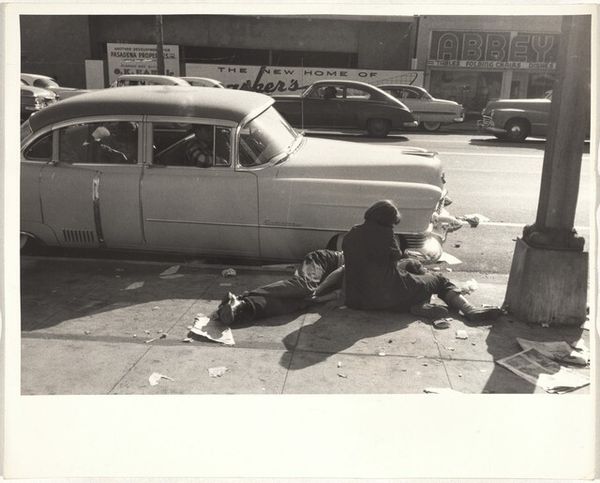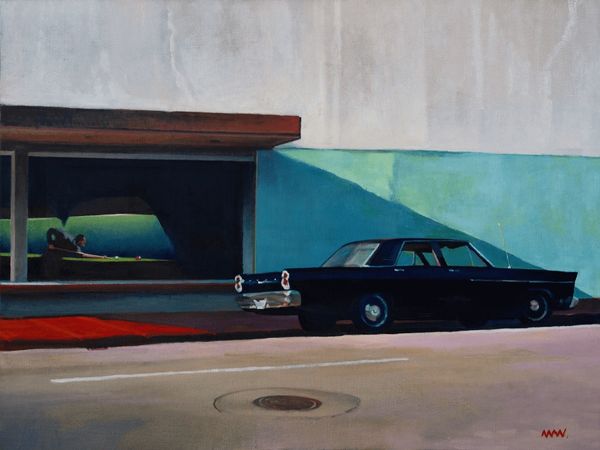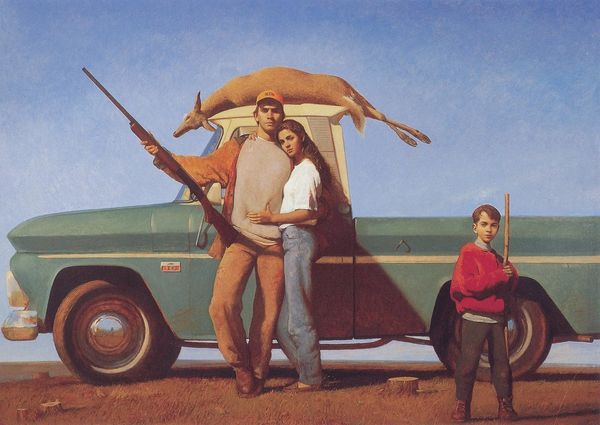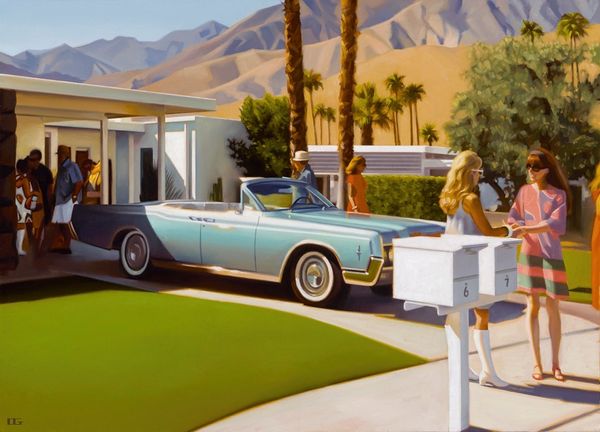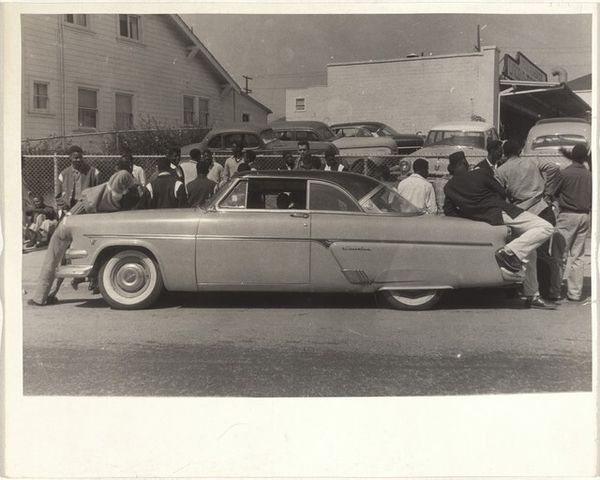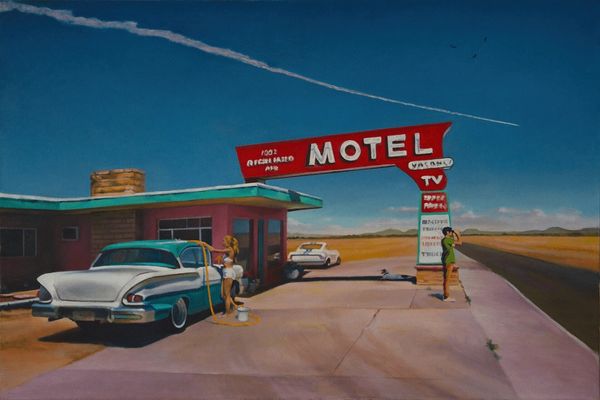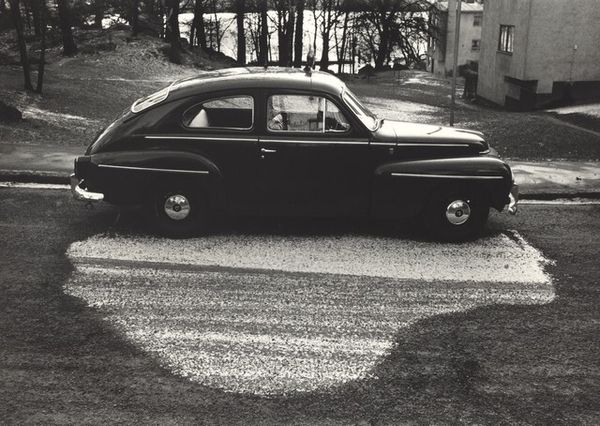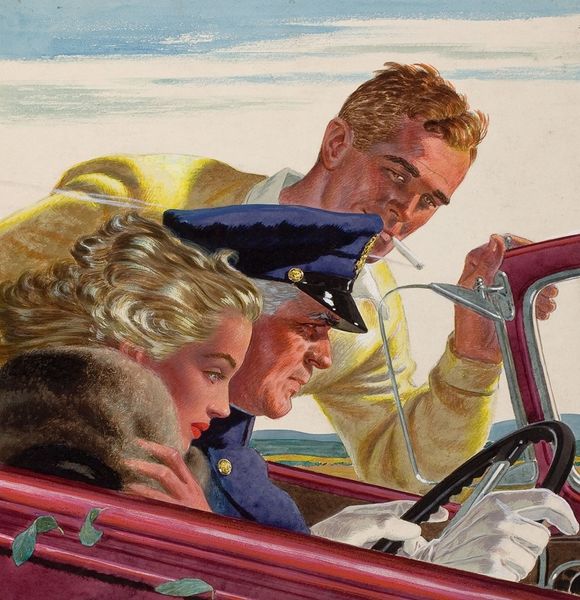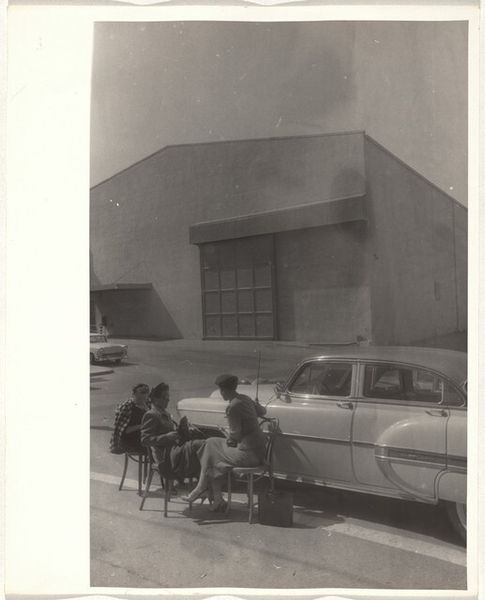
photography
#
portrait
#
photography
#
genre-painting
#
modernism
Dimensions: image: 30 × 42.55 cm (11 13/16 × 16 3/4 in.) sheet: 33.02 × 43.82 cm (13 × 17 1/4 in.)
Copyright: National Gallery of Art: CC0 1.0
Editor: So, we're looking at "Studebaker Car Advertisement," a 1938 photograph by Paul Hesse. The colors are really striking – that bright blue car against the peachy building. I find myself wondering about who this image was meant to reach. How do you interpret this work in its historical context? Curator: It's crucial to remember that advertisements, especially from this era, are carefully constructed representations of societal aspirations. Beyond selling a car, this image sells an ideal. We see a staged tableau of upward mobility and racial dynamics. Editor: Racial dynamics? Curator: Absolutely. The inclusion of a Black individual, possibly a servant, on the porch alongside a group of white people is not accidental. Consider the year: 1938. Segregation was still very much a part of American life. What does it mean to position him, almost passively, within this picture of domestic prosperity? Does his presence signify progress, or does it simply reinforce existing social hierarchies? Editor: It seems contradictory, promoting a modern image while perhaps reinforcing older social norms. Was there something about Studebaker's image, or marketing strategies, at that time, that this connects with? Curator: Precisely. This photograph reflects the complex relationship between commercial imagery, racial representation, and the construction of the American Dream during that period. Remember, advertisements weren’t just about the product; they were shaping and reflecting social attitudes, creating desires and reinforcing stereotypes. Think about who was in control of the image-making and advertising industries then, and whose stories they were prioritizing. Editor: I hadn't considered the advertisement in this light. It's a powerful reminder that even seemingly simple images are layered with cultural meaning. Curator: Exactly. Looking at art this way transforms our understanding of what museums chose to show, how art helped construct a narrative for and of the people, and the public role of art in shaping perspectives of society.
Comments
No comments
Be the first to comment and join the conversation on the ultimate creative platform.
